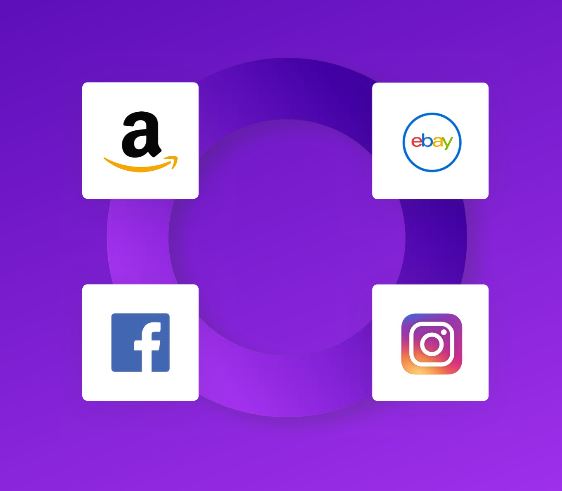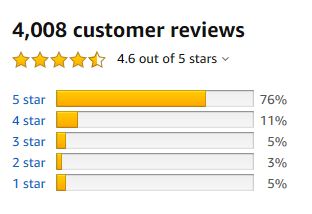
I can remember a time when the most important distinction between sales channels boiled down to brick-and-mortar stores vs. the internet.
But with the exponential growth of e-commerce in recent years, customers are increasingly utilizing multiple online platforms — with an emphasis on “multiple.” As their shopping experience gets easier, our jobs as e-commerce entrepreneurs get harder. Multi-channel management has become a stressful but necessary fixture of our daily work lives.
To help save you some of the growing pains I’ve experienced as a multi-year veteran of multi-channel selling, I’d like to give you a few management tips that have worked for me:
1) Choose the right channels
A lot of multi-channel strategy is about finding the elusive balance between focusing too heavily on one website and stretching yourself impossibly thin over several platforms. If you’re confident in your entrepreneurial vision, then you already have a solid sense of your ideal customer. On what sites or apps is this person most likely to shop?
Let’s say, for example, that you create and sell quirky, handcrafted items …
You already know that Etsy would be a logical place to market your products. However, this wouldn’t necessarily prevent you from selling on a self-hosted WordPress storefront — or dividing your time between the two sites.
You would need to compare the rules, fees and compatibility of payment methods between the two, all while keeping in mind that the type of person who visits one may not be the same type who visits the other.

Some trial and error will also be necessary as you tailor and tweak your strategy according to the demands of specific channels. For instance, a more Amazon-oriented seller would be unlikely to choose all the right keywords on the first try, making it necessary to experiment with how a listing is wording — something I’ve spent way too much time doing!
2) Set up smart alerts for inventory metrics
This sounds like a no-brainer, but far too many online sellers have found themselves in the reputation-damaging (not to mention embarrassing) position of selling an item that isn’t in stock. A brand that sells on multiple channels requires a centralized, comprehensive way of keeping track of available products across those same channels.
To continue with the Etsy and WordPress hypothetical, let’s say five knitted elephants are sold on Etsy, while five are sold on WordPress. If the original inventory was 10, then the seller’s record-keeping system would need to be updated to reflect 0 knitted elephants in stock.
However, it’s also worth noting, in this case, that each channel supports its own built-in inventory tracking. But because Etsy does not push data to and from your WordPress site’s commerce engine, the seller would still need a separate document or software to reflect any and all changes.

Basic inventory is also an important component of sales metrics, which must be continually monitored to ensure that you’re operating across the right mix of channels for your business needs.
3) Use platform-agnostic tools
I know the idea of juggling all the logistics of multi-channel selling on your own sounds daunting. That’s why I recommend using a third-party platform that will essentially take care of the hard parts for you.
To provide an example using a real-world business and a real-world e-comm platform, consider the story of the alliteratively named Seriously Silly Socks. It started small, with unusual-looking socks being sold at Christmas markets.
Then came online selling, as the owner’s ambitions expanded and he signed up with the BigCommerce platform, which integrates with multiple channels and enables easy management from a single dashboard. From there, it was a steady journey upward, through Amazon and eBay and, ultimately, through the brand’s own e-comm site.
Along the way, Seriously Silly Socks managed a 50 percent increase in revenue, 38 percent increase in orders and 5.3 percent conversion rate – an enviable record by any standard, ultimately made possible by an all-in-one approach to multi-channel integration.
4) Prioritize the customer
At the end of the day, no matter how finely tuned your multi-channel machine, the customer is still king (or queen). In other words, there is no substitute for the ability to make a seller-customer connection by way of beautiful images, awesome copy, a high-quality product and first-rate customer service.

This is especially important as you expand your sales channels, which in turns means devoting even more time to managing your channel mix. Make sure that some of this time includes meeting the needs of customer service and support. Keep in mind that bad customer service could trigger complaints that get you ejected from a marketplace.
Another aspect of this is providing a consistent customer experience across channels. While your messaging will differ somewhat from channel to channel, your tone and aesthetic should not. Above all, never lose sight of what makes your brand special to its past, present and future customers.
Get the TNW newsletter
Get the most important tech news in your inbox each week.




